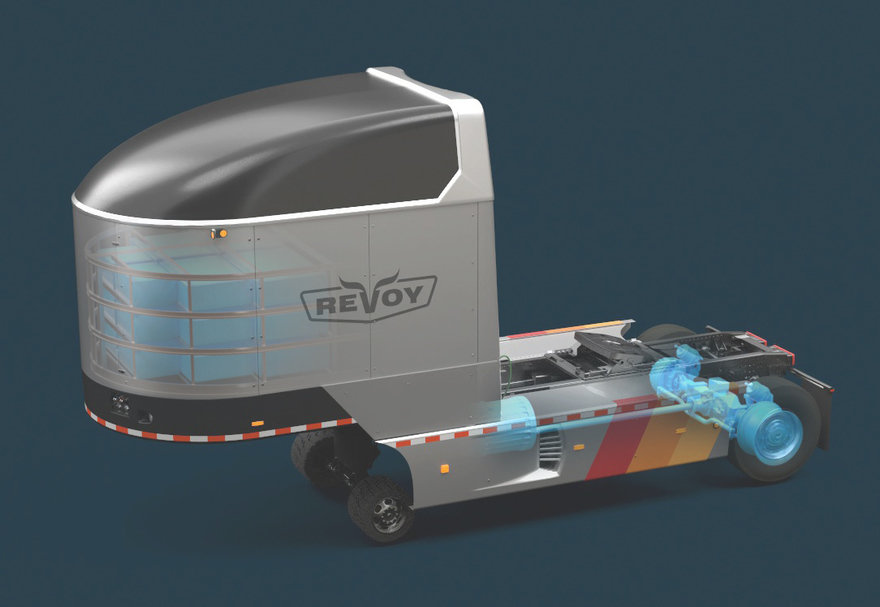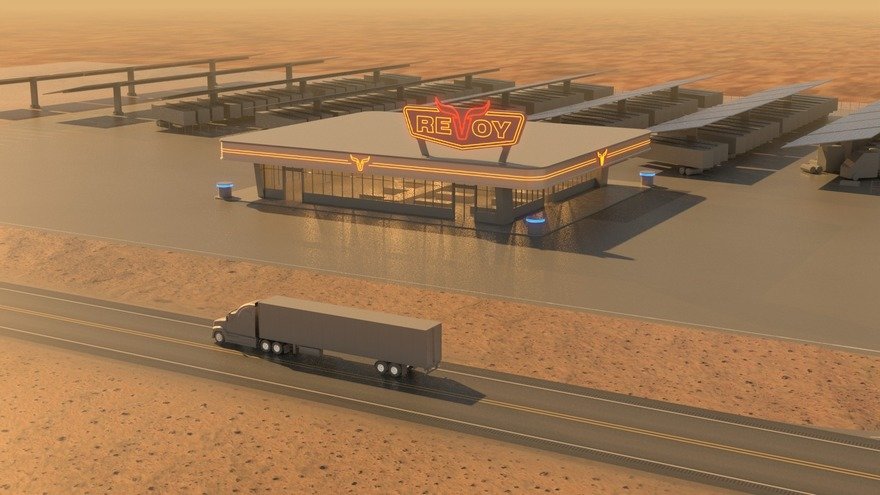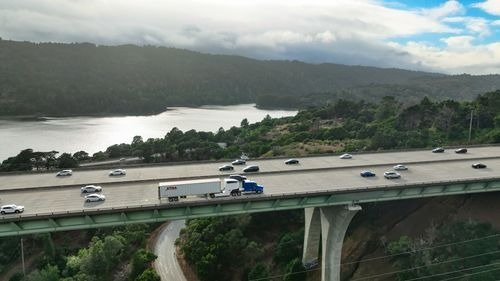Brilliant Revoy System Reduces Truck Emissions Up to 90% at No Cost
It plugs in between a truck's cab and trailer
Here's a brilliant, outside-the-box solution to a problem.
The backbone of American commerce is long-haul trucking. Everything you're wearing right now, and most things that make up the environment you're sitting in, arrived on the back of a truck.
Those trucks are powered by diesel fuel, which isn't great. Fleet operators are under increasing pressure from state and federal agencies, shippers, and corporate clients to reduce emissions. But fleet operators have already invested in their diesel-powered cabs, and buying a new EV semi cab can cost anywhere from $200,000 to $400,000 each.
Enter Revoy, a California-based startup. They've figured out a way for trucking companies to drastically reduce emissions, and fuel costs, for free. The company has developed this Revoy EV, which is loaded with a battery array and a powerful electric motor:

The Revoy unit can be inserted between a conventional truck cab and its trailer. It then provides most of the power to haul the load, instantly cutting emissions by 70-90%.
Revoy doesn't sell the units. Instead they've set up stations along interstates in Arkansas and Texas.

Truckers pull into these stations, and an attendant hooks up the Revoy EV.
The truckers are then charged, per mile, for usage of the EV. Small fleet operators—those with 1-4 trucks—are purposely charged the same amount per mile as diesel costs. So while they're not saving any money, they are instantly meeting their emissions reduction requirements without having to pay for a new EV cab.
Larger fleets with five or more trucks are charged 5% less per mile than what diesel costs, and so are able to enjoy a cost savings. Corporate fleets, which operate dozens to hundreds of trucks, are charged 10% less than diesel. This is because it is scale that allow Revoy to turn a profit.
Swapping a depleted unit for a freshly-charged one takes just five minutes, versus the 10 to 15 minutes it would take to refuel a truck with diesel.
The Revoy EV units do add 13 feet of length to the overall truck, and I'd wondered about how difficult that makes it for drivers to back into loading docks. But the company says the units feature a driver-assist system consisting of sensors, cameras and an automatic reversing system that makes the truck "pleasantly maneuverable."
Following the successful Arkansas and Texas trials, the company is now expanding their swapping stations into routes in California, Oregon and Washington.

-
o6Favorite This
-
Q4Comment
K
{Welcome
Create a Core77 Account
Already have an account? Sign In
By creating a Core77 account you confirm that you accept the Terms of Use
K
Reset Password
Please enter your email and we will send an email to reset your password.


Comments
Cutting "70%-90% emissions" as if this object magicly appeared on location, no it's manufactured and needs to moved, recharged, etc..
It is really time that we come up with a comprehensive footprint indicator, as of right now there isn't a widespread way of measuring that help everyone comprehend the impact, we should be able to compare it at purchase first and as we go.
How are you planning to make people believe they're doing something positive when there's no evolving numbers to prove it ?!
Brilliant idea
I could not imagine trying to reverse a double-hinge trailer.....
Except the Battery section is powered, so maybe it's still like backing up a single trailer?